Dorothy Smith: Landmarks
★★★★
In his 1985 study of contemporary American architecture, The Secret Life of Buildings, Gavin Macrae-Gibson looked beyond the utopian moment of Modernism to the emergent architecture of the time, as exemplified in seven projects.
What they shared, he argued, was an awareness of the need to grapple with a difficult, troubled present rather than expressing, or gambling on, an idealised vision of the future. The transition in architectural thinking is still playing out in the uneasy architecture of our own time.
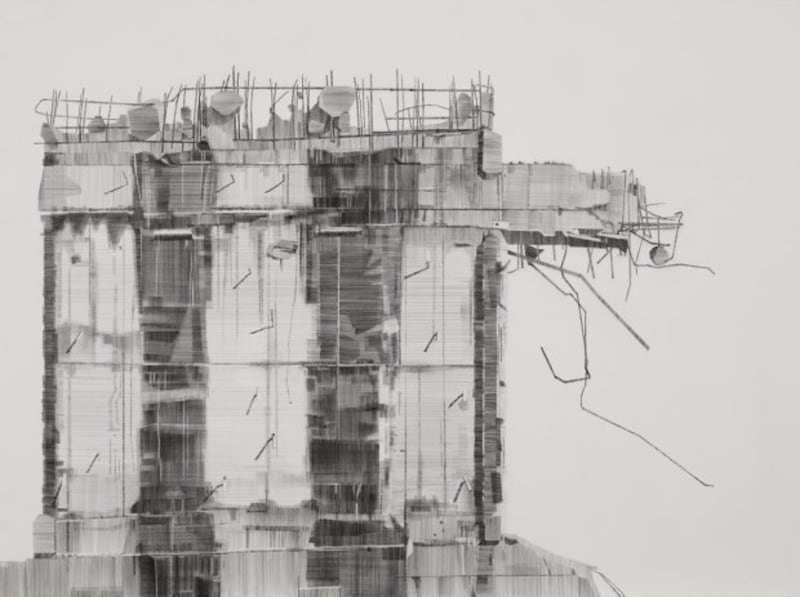
Uneasy architecture, and perhaps uneasy engineering, are phrases that particularly suit Dorothy Smith’s drawings. Her subject matter is the built environment, usually as it defines public space, which also merits the epithet uneasy. The structures are not there as a backdrop in her work.
On the contrary, they occupy centre stage and in many cases are abstracted from their environment, so that, as with the soaring arch in Bypass, they are more noticeable, more graspable as independent constructions, than they would be when seen, as they usually are, in context. In fact, often we don’t see them at all. They are just there. At the same time, her precise, technically polished drawings are not the pristine visualisations of architects’ projections, with generic vegetation and stylised humans living curiously bland civic lives.

In her drawings, Smith encompasses construction and demolition and the in-between stage, the one where the architectural vision is subject to the slings and arrows of outrageous fortune. Any city is a perpetual work in progress, shifting, provisional, the numerous constituent parts never quite fitting neatly together. Smith is good on those gaps and seams, the edge areas and anomalous spaces that are part and parcel of the infrastructure rather than mistakes to be planned out of existence. To some extent, people find breathing space in these unofficial corners. In Fallout, a tent is pitched among trees in an anomalous tract just beyond the built boundary.
It's noticeable that her views of structures notionally designed for the benefit of access, communication, habitation and recreation pick up on qualities that seem to work against all of these things. Jockey Block looks like a mammoth block of concrete, designed as a roadblock (like the barricade in Elsewhere). A post-industrial Rosetta Stone, scarred and inscribed with an account of its history it is, as the punning title suggests, perched on a wood palette, waiting to move on to its next assignment.
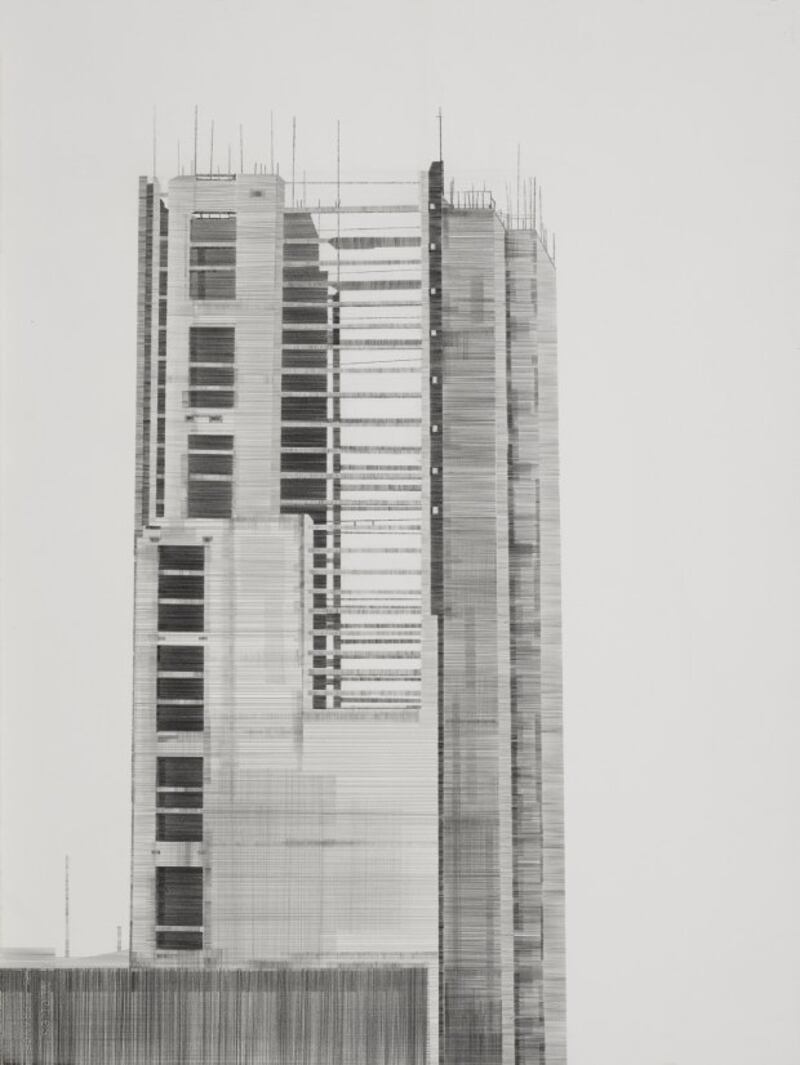
Jockey Block is also like a rather beautiful, minimal piece of sculpture. That’s a recurrent quality in Smith’s depictions of concrete structures. One never feels she is simply having a go at concrete brutalism, more trying to figure out how we live with it, and how it might best serve us.
- Dorothy Smith: Landmarks is at Ashford Gallery, RHA, 15 Ely Place, Dublin until April 8th rhagallery.ie
Liliane Lijn: The Artist's Eye
★★★★
In Imma's show As Above, So Below, Liliane Lijn's work was a revelation. Born in 1939, Lijn is one of those remarkable free spirits who follow their own creative path, ranging across disciplines with ease. Lest that sound a little self-indulgent, she has worked always to the most exacting standards and, for example, did pioneering research when devising ways of making her kinetic, textual sculptures. To accompany her show Seasons End, Tamara Henderson was asked to invite an artist of her choice to show in Gallery 2. Given the imaginative ambition of her work, one can see why she would be drawn to Lijn.
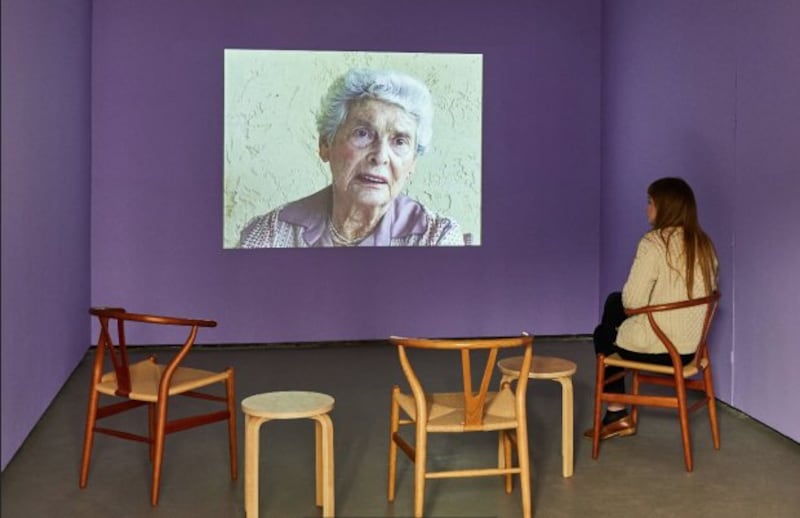
Look a Doll! My Mother’s Story, the hour-long film that Lijn shows, is a deeply personal work that stems from an exploration of her mother’s past, including her childhood in Russia and Poland. She started to interview her mother when, approaching an autobiography, she realised she knew little of her parents’ past. That resulted in a book, Her Mother’s Voice, after which she essentially embarked on the project again, as a film, between 1998 and 2000.
The result is a spiky, rough-textured, funny, and immensely touching piece of work, combining interviews – besides her mother, her cousin Harold is a great interviewee – and a wealth of archive material. Lijn doesn’t go easy on anyone, including herself. Her parents were Jewish and they were, quite simply, faced with the prospect of annihilation. As it happened, her father, a man of indomitable self-assurance, had a Cuban passport. In 1936 Lijn’s mother persuaded him to make their way to the United States. But life is complicated even when people aren’t trying to kill you and Lijn delves into the saga of her parents’ lives in New York and their travels (they separated eventually).
Her mother, who apparently was in the early stages of dementia, comes across as a tremendous, outspoken, shrewd, strong person (though she laments her loss of self-confidence with insight) reluctantly dragged into this whole film business. “I think I had quite an interesting life,” she reflects. “I must say I don’t like to brag about it. It was the Hitler-time, it was the wartime, and I somehow survived.”
- Liliane Lijn: The Artist's Eye is at Gallery 2, Douglas Hyde Gallery, Trinity College Dublin until May 5th douglashydegallery.com
Emma Roche: Forward Slash
★★★★
In Tom Stoppard's play Jumpers, a male academic, whose wife, locked in the bathroom, has just called loudly for help, calms an alarmed colleage with the reassuring words: "Don't worry, it's just a cry for help."
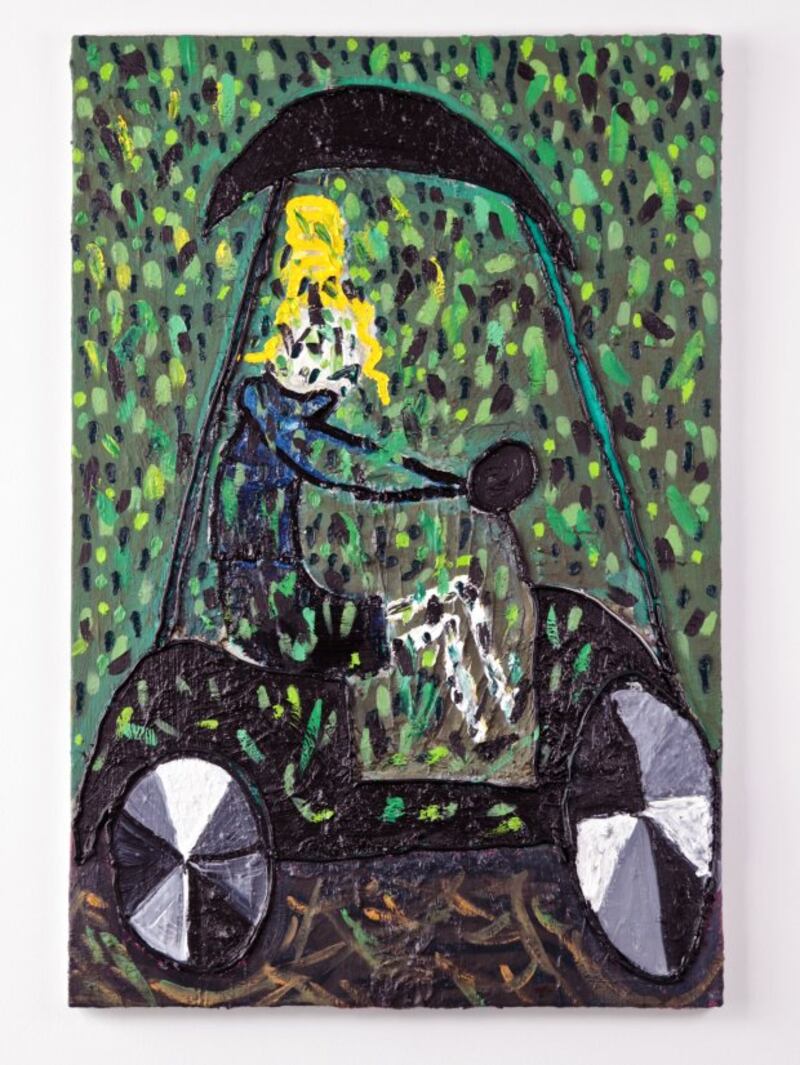
Emma Roche’s Forward Slash is, likewise, just a cry for help, or a cry of exasperation and frustration. Nothing to get alarmed about. Her stormy paintings, mostly small in scale and all the more concentrated for that, disdain finesse in favour of rough, cartoonish imagery conveyed with crude, awkward lines and garish colour. Yet felicities sneak through. Her baseline instincts deliver fine harmonies and rhythms with the humour.
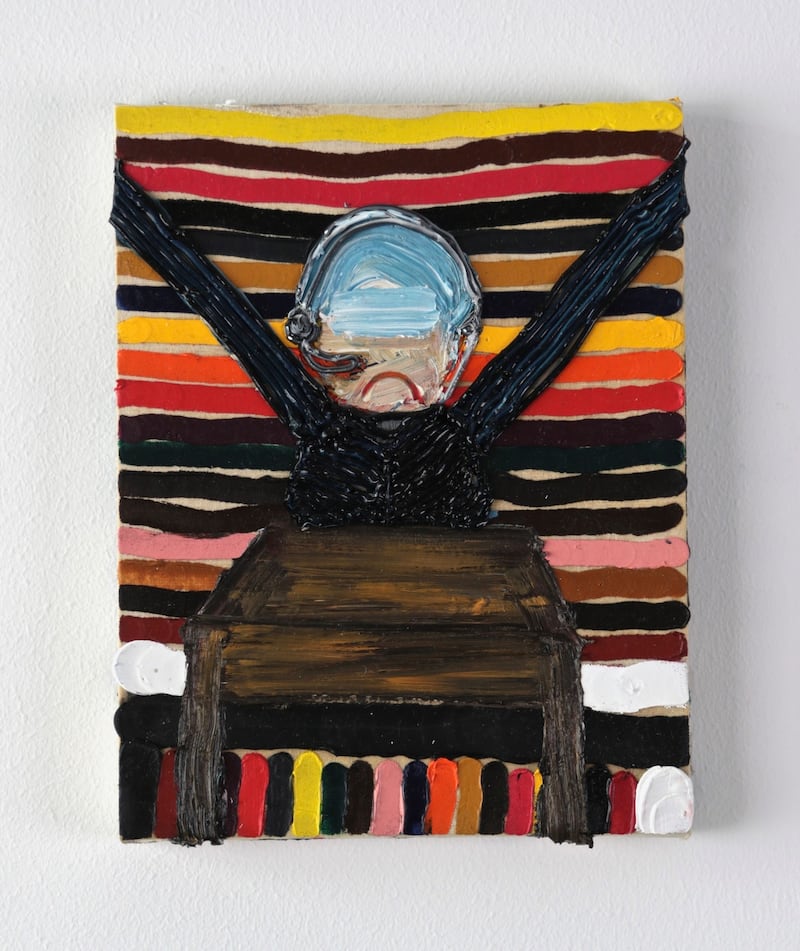
Her subject matter is, broadly, the gig economy, topical in an age of zero-hour contracts and casual service industry jobs, especially those created by disruptive technologies. Yet the gig economy she has in mind is not really new, it’s long familiar to the majority of those engaged in creative activities, especially those who see creative activity as their primary occupation. Creatives have traditionally subsidised their calling by working at anything and everything, multitasking to survive and gain time to pursue their own work. What’s changed now, perhaps, is that everyone is expected to be a creative.
- Emma Roche: Forward Slash is at the LAB Gallery, Foley St, Dublin until June 3rd dublincityartsoffice.ie/the-lab/




















